Last night in Tel Aviv, I took off my earrings, placed them on the bathroom vanity, and went to sleep. I have been working very hard to finish a book, and so I went to bed uncharacteristically early. But—in the morning, my earrings were strewn to the floor, along with all my makeup.
In the middle of the night, the Houthis in Yemen reportedly sent a drone to attack Tel Aviv, and it landed perilously close to the U.S. Embassy—a very short walk from where I was sleeping, in my wonderful friend’s apartment.
I thought I heard nothing.
But then I saw Adi, the neighbor, who said I got up in the middle of the night, went to the staircase, and talked with her about what was going on. She had just returned from the hospital. She said there was a huge noise, and that the building shook. I remember none of this—but my fallen earrings tell another story.
There is always another story, beyond the headlines, which is what I hoped to write about this time.
These days in news-land, at least in the English language, all eyes are on Donald Trump and his bandage, the Republican convention, the opinions of a writer-turned-senator named J.D. Vance, and the fate of the free world.
I happened to arrive in Israel days before the Trump shooting occurred, and I was truly curious to see for myself what was going on in Israel. I received an unexpected assist from the pilot; for the first time in my lifetime of flying to Tel Aviv—the flight arrived early. Very early. Then, incredibly, I was the only person in the passport line, so I had the time to walk slowly without other travelers rushing me along. Here is what I saw just after leaving passport control.
This is a cardboard placard with a photo of 22-year-old hostage Omer Neutra. As you can see, it is packed with personal comments from his friends and family. On the right, the note stuck to the bottom is from Neutra’s neighbors, who say they are waiting for him at home in Kfar HaNasi. “Just a little bit and you’ll return to us,” write the Franks. The Hebrew script is festooned with hearts.
While the world has perhaps moved on from the hostages, Israel hasn’t. You can see a piece of masking tape with “265” on the poster, for the number of days in captivity. (It’s more now; someone at the airport updates the tape every day.) I did not know when I saw this poster that Omer’s parents would soon address the Republican convention.
Omer is just one of 116 remaining hostages kidnapped on October 7th and taken to Gaza; no one knows how many are still alive.
I paused as I passed the placard for now-famous baby hostage Kfir Bibas.
Kfir Bibas, the baby held hostage, is the first in this row of hostage photos.
And then, since I had a bit of unexpected extra time before the Rohr Institute conference for Jewish fiction and nonfiction began in Jerusalem, I took the train to central Tel Aviv and walked to my favorite coffee shop.
A New Genre: The Soundbite
I was surprised by much of what I saw on my 30-minute walk. The soundbite may be the most important genre of the moment, and perhaps the one photo that we see everywhere is its cousin; consider, for example, how Trump’s iconic photo of himself post-shooting is changing the narrative.
But I don’t believe one photo—or one soundbite—can say it all, and for that reason, I’m including a wide array of images. This photo essay attempts to reproduce a walk, in the heat, at a heated time; it is not meant to have a specific political tilt. I hope to make a case for seeing more, not less, in this time of danger and complexity.
Equal draft for everyone, the sticker says.
The first thing I saw when I got out of the HaShalom train station in central Tel Aviv was this green sticker blaring giyus shaveh l’kulam, or “equal draft for everyone.” In Israel, many Ultra-Orthodox citizens currently do not serve in the military; the anger over this is palpable in this sticker. (Today’s newspaper—Friday, July 19th—reports that 1000 ultra-Orthodox young men will be drafted this week.)
Prayers Everywhere
Next, I passed a pole with a sticker of the prayer for the imprisoned. It starts “acheinu kol beit Yisrael,” or literally our brothers in the house of Israel. The original matir asurim, or “who releases the imprisoned” prayer, likely dates back to the third century. This crisis has sparked the writing of many new prayers, for the hostages, and for so much else; back in November, I wrote about old and new prayers for the imprisoned for The Forward. https://forward.com/culture/567835/rabbis-writing-prayers-for-captives-hostages-held-by-hamas/
In any case, this one, seen here, is quite old. The bold letters at the top are acheinu, or our brothers. The bold letters at the bottom read v’nomar amen, or “let us say Amen.” I did not know it then, but this prayer is everywhere throughout Israel—at restaurants, train stations, and on private homes I later walked past in Jerusalem.
I kept walking. Near a bus stop, this bit of scrawled graffiti, pictured below, got to me. It says im atem korim et zeh, atem chofshiyim, taarichu et zeh,” or ‘if you are reading this, you are free. Value it.”
The drawing on top says achshav, or now. The word “now” — in Hebrew and in English— is something I saw over and over again on my walk. I could feel the frustration with the length of this war.
Then I looked up. I was standing at what is now called Democracy Square. This sign, like all street signs in Israel, is in Hebrew, Arabic, and English. It may be easy to forget that before 10/7, Israel was awash in democracy protests.
I kept walking, and stopped at this anti-government sticker—one of many. This one says memshelet churban u’biza, or “government of destruction and plunder.” It’s worth noting that the word churban is the word used by many Yiddish speakers to describe the Holocaust, and it’s also the Hebrew word used to describe the destruction of the Temple in Jerusalem two thousand years ago.
Mothers and Sons
I walked a bit more and saw another yellow sticker. This one is from mothers. The organization is Imahot neged ha’kibush, or “mothers against the occupation.” The sign calls for removing male and female soldiers from the territories. The Hebrew language distinguishes between feminine plurals and masculine plurals, and that is featured in this sticker.
The next sign made my heart break, and it took me back to the summer of 2014, and a previous war with Hamas in Gaza. (At that time, I was also finishing a book—The Grammar of God.)
Those two faces were so familiar. Both are Israeli soldiers who were killed in Gaza in 2014, and whose remains remain in the hands of Hamas. On the left is Hadar Goldin, and on the right is Oren Shaul. I read that there was a Hamas statue triumphantly featuring Oren Shaul’s dog tag in Gaza. "The most memorable moment for me was when we reached the neighborhood’s central square and toppled Hamas’ statue featuring Oren Shaul’s dog tag,” a lieutenant colonel in the Israeli army told Israeli news.
This sign, in the blue below, says “victory=the return of the sons.” It’s a reminder that in addition to holding living hostages, Hamas is holding bodies hostage.
The world may have forgotten, but Israel hasn’t.
Victory = the return of the boys, or the return of the sons.
As I walked, I passed two well-known tech companies—Checkpoint and Fiverr. Take a close look at the side of the Checkpoint building. It says, in English, “Bring Them Home Now.”
Fiverr goes with one word—Now.
I passed another pole. The top had a sticker of Israeli American hostage Hersh Goldberg-Polin, and the bottom two are stickers of two slain Israeli soldiers, each featuring a line from the “last letter” each soldier writes before going to war. Once again, I was struck by how young they are, or were.
The Shock of Dizengoff
At the famous fountain in Dizengoff Square, I was astonished by how it had all been turned into a shrine for the dead and the missing. Note how there is a mass of stuffed teddy bears at the bottom of the fountain, along with crumpled Israeli flags.
Throughout this part of Tel Aviv, massive, bloodied teddy bears sit on public benches. Almost every bench is festooned with stickers featuring the dead. Some benches say: “my brother is in Gaza” or “my father is in Gaza”.
This is what so much of the news coverage misses—how close and personal this is for Israelis.
There are almost no tourists in Tel Aviv right now. The city, as a translator friend said to me yesterday, seems “subdued.” And yet—cafes and restaurants are full; people rush to work. Traffic jams. Life continues here, yet the pain is palpable and unavoidable. It is everywhere, if you just stop to look.
The fear and dread are there too. You can hear it in the night, in last night’s perilous explosion, which killed one man in his nearby apartment and injured at least ten. I don’t remember hearing my earrings fall to the ground, but here they are, pictured below.
The moon and the stars, which watch over us all. Shabbat shalom.
**********************************************************************************************
Hope you found this newsletter meaningful! Thank you for your support of writing with depth.

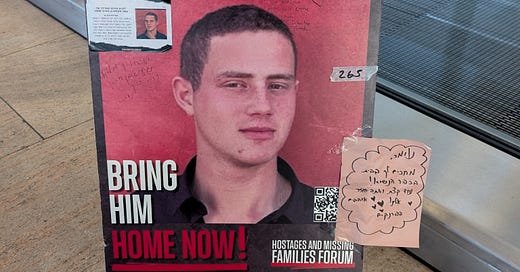



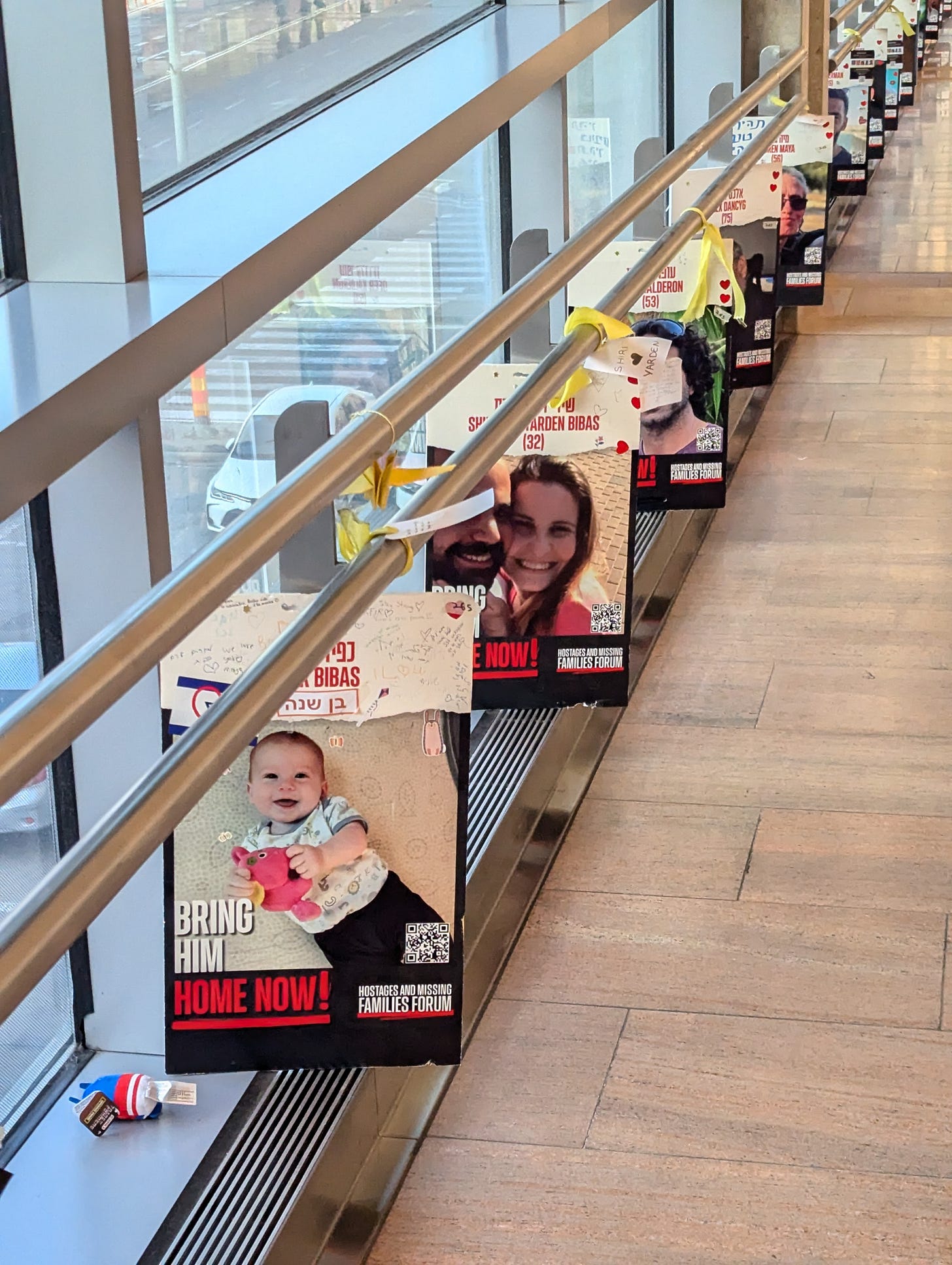
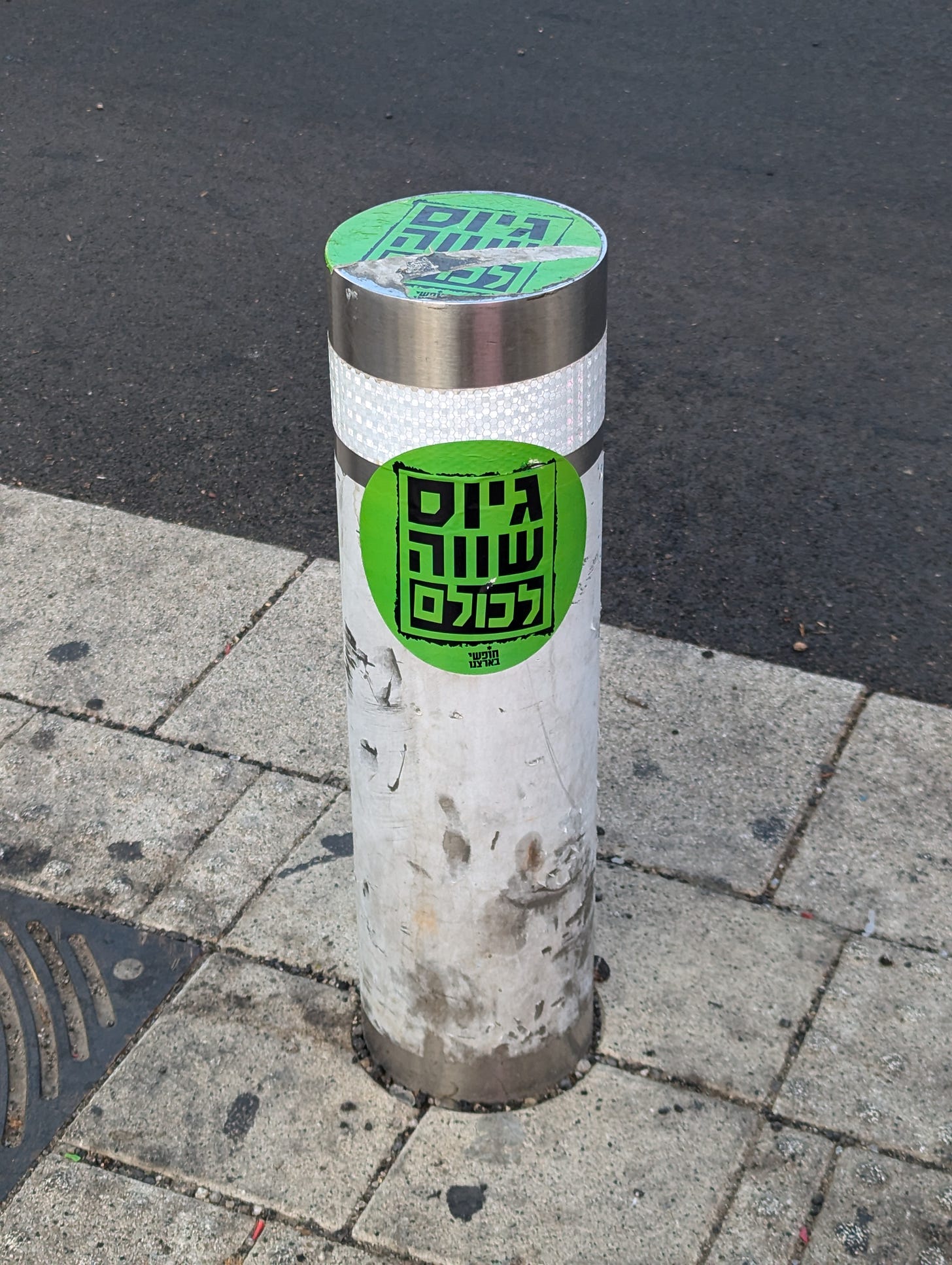
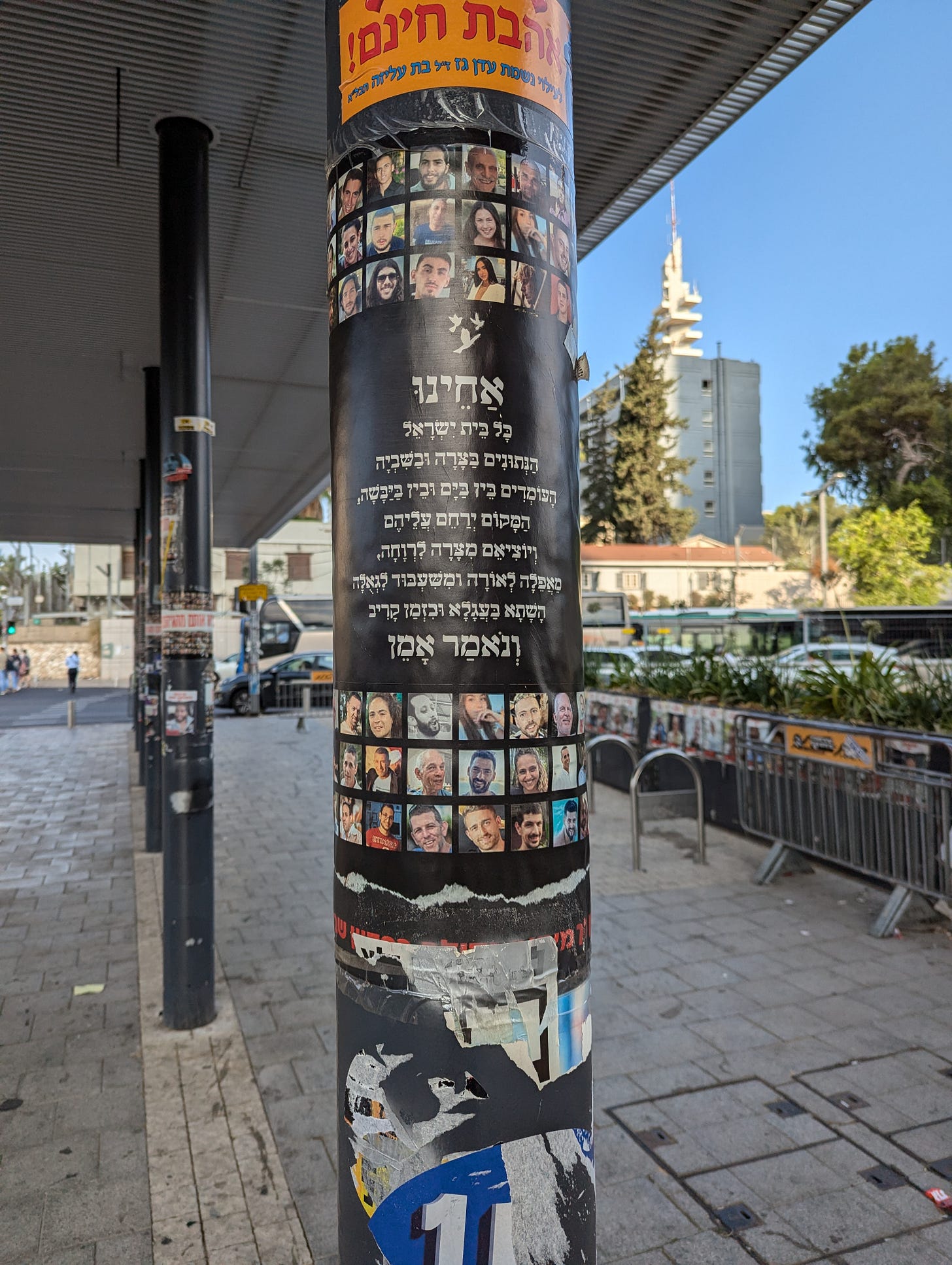
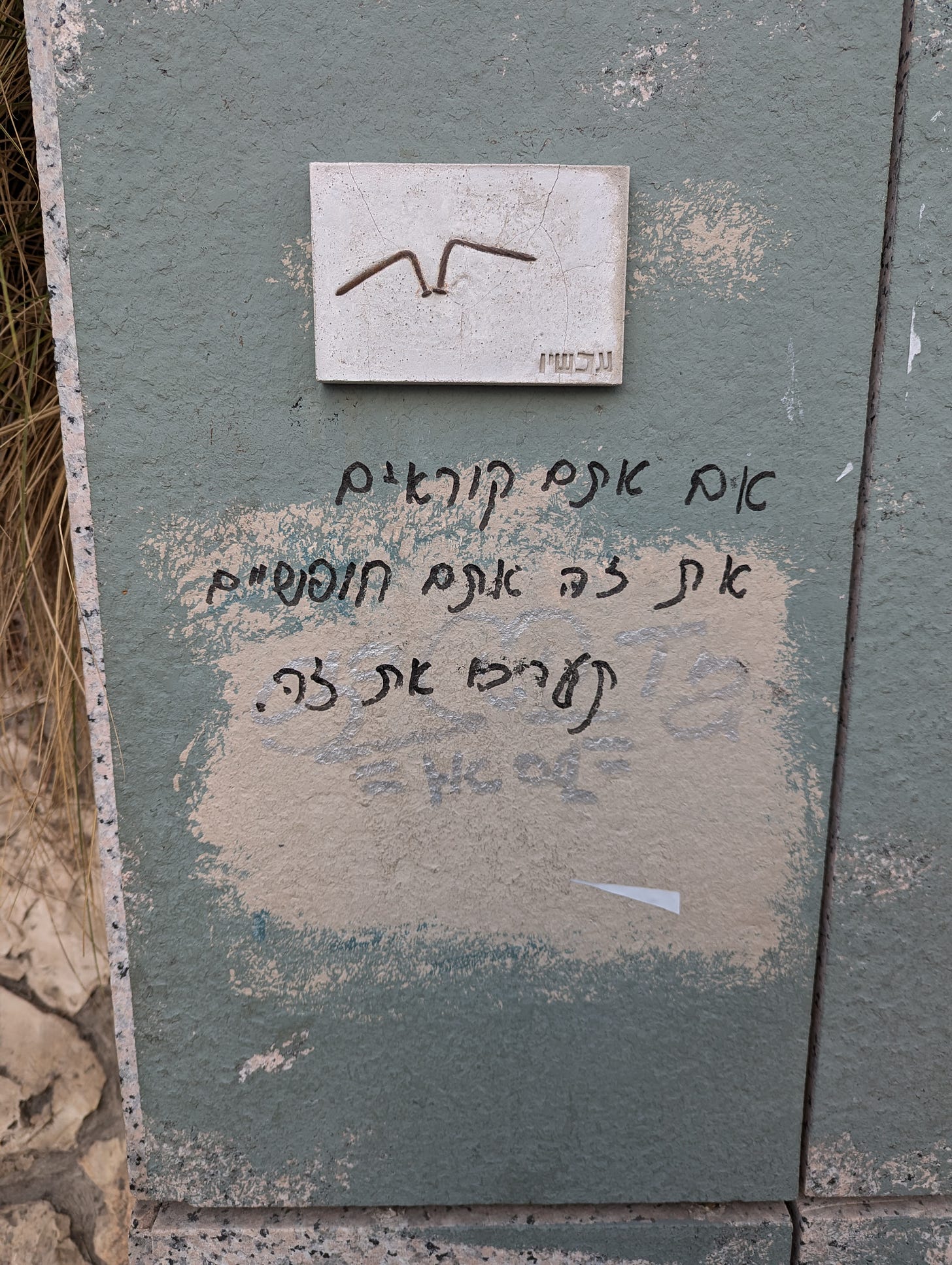
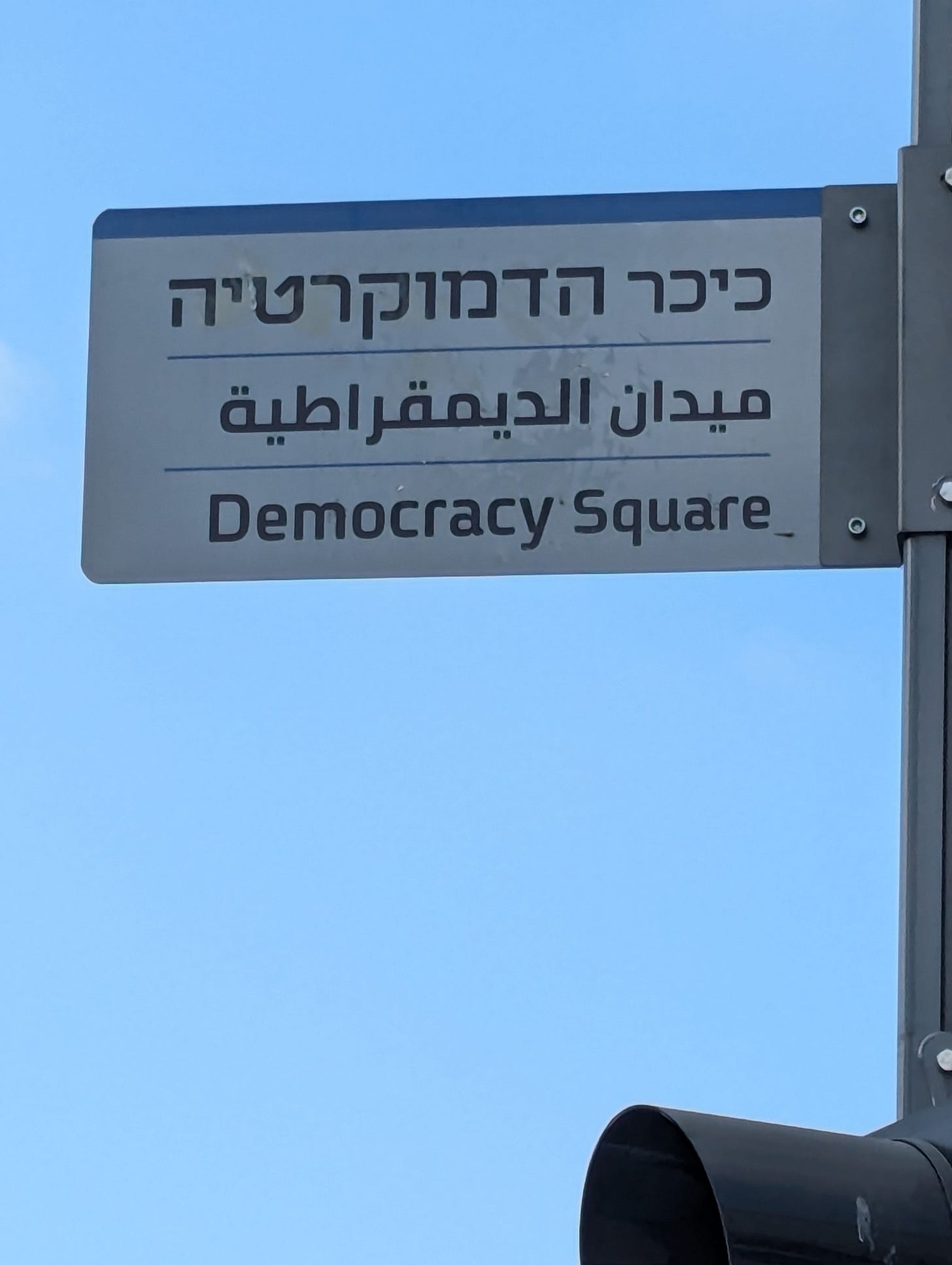

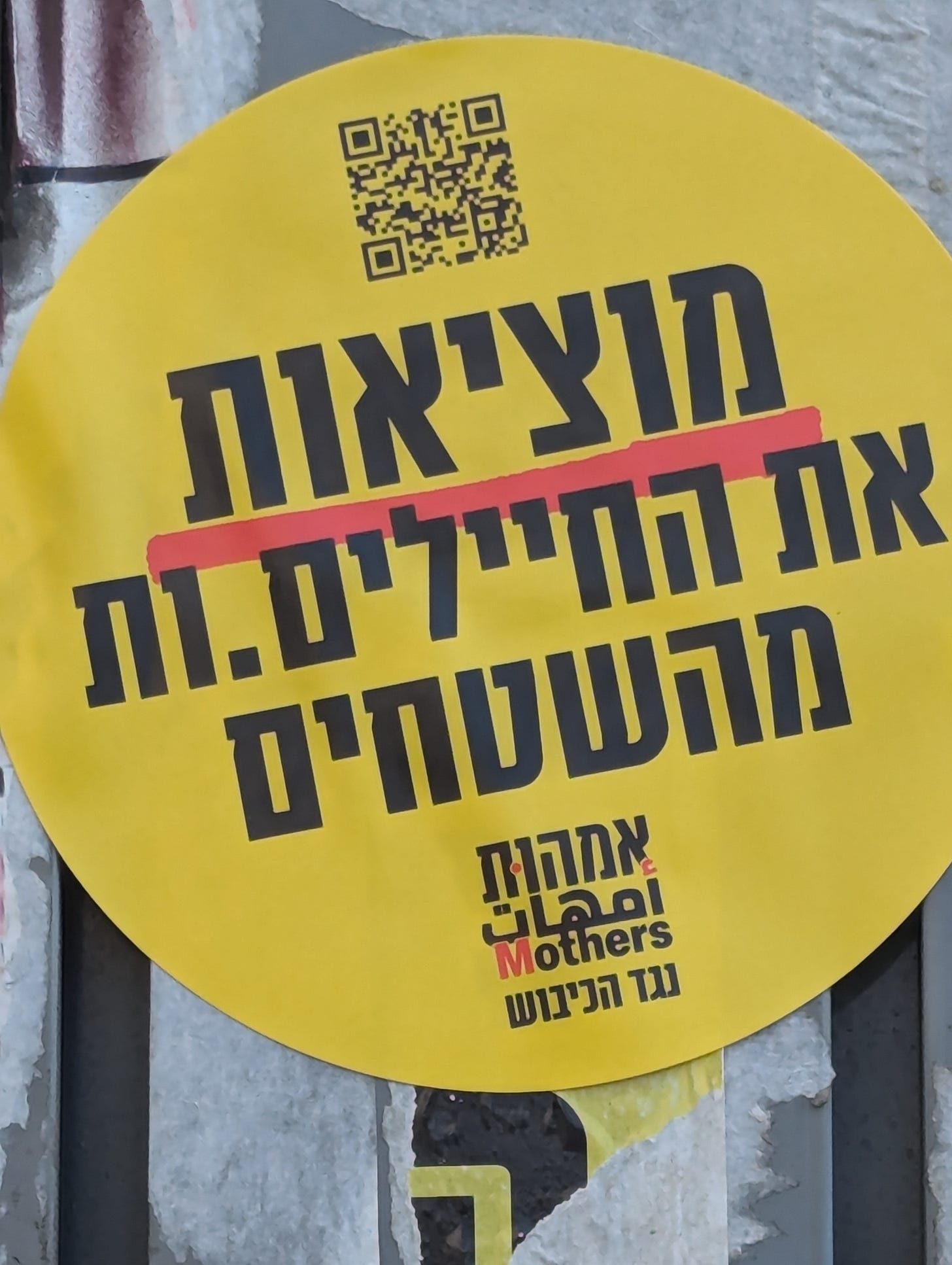
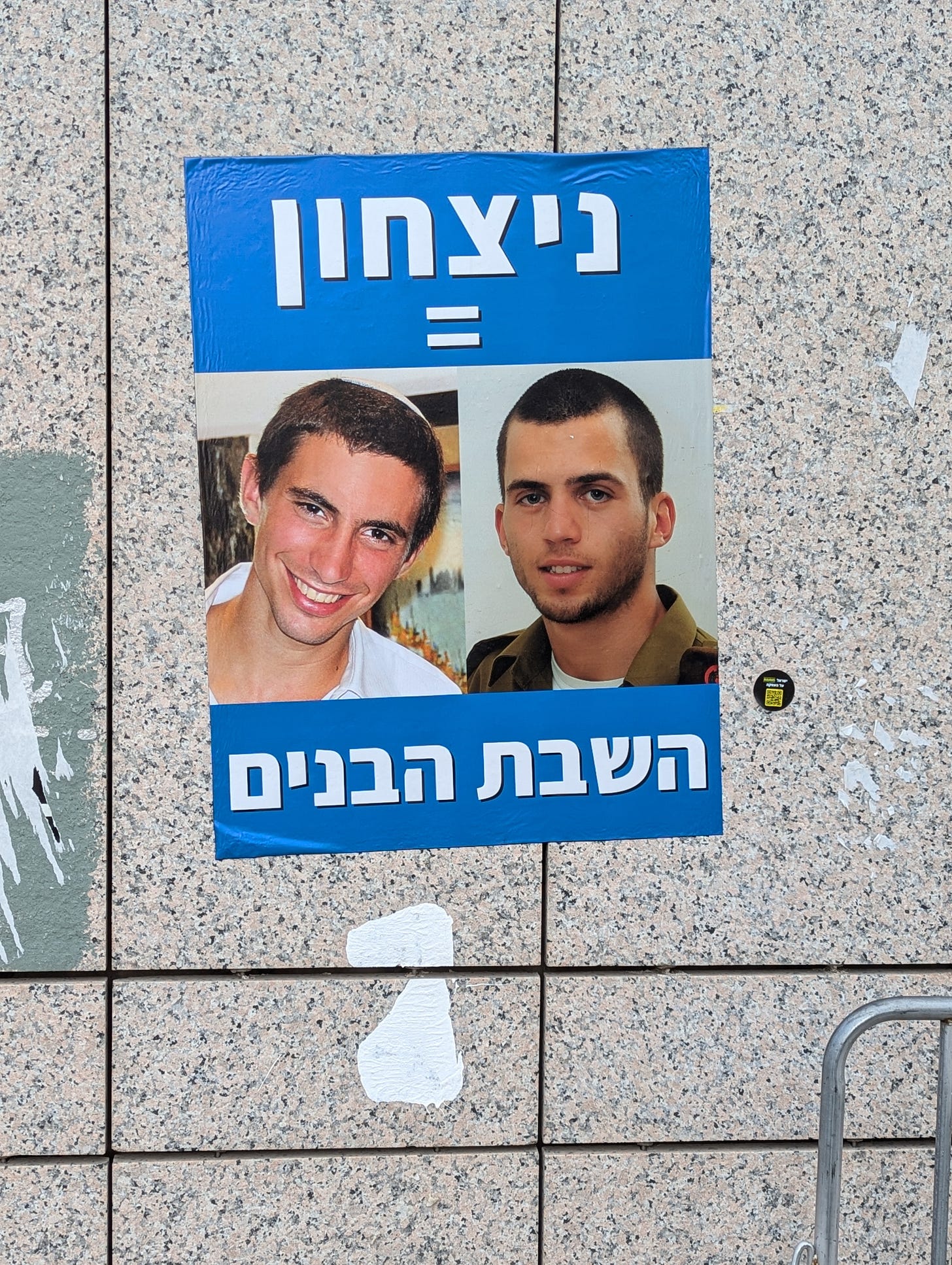
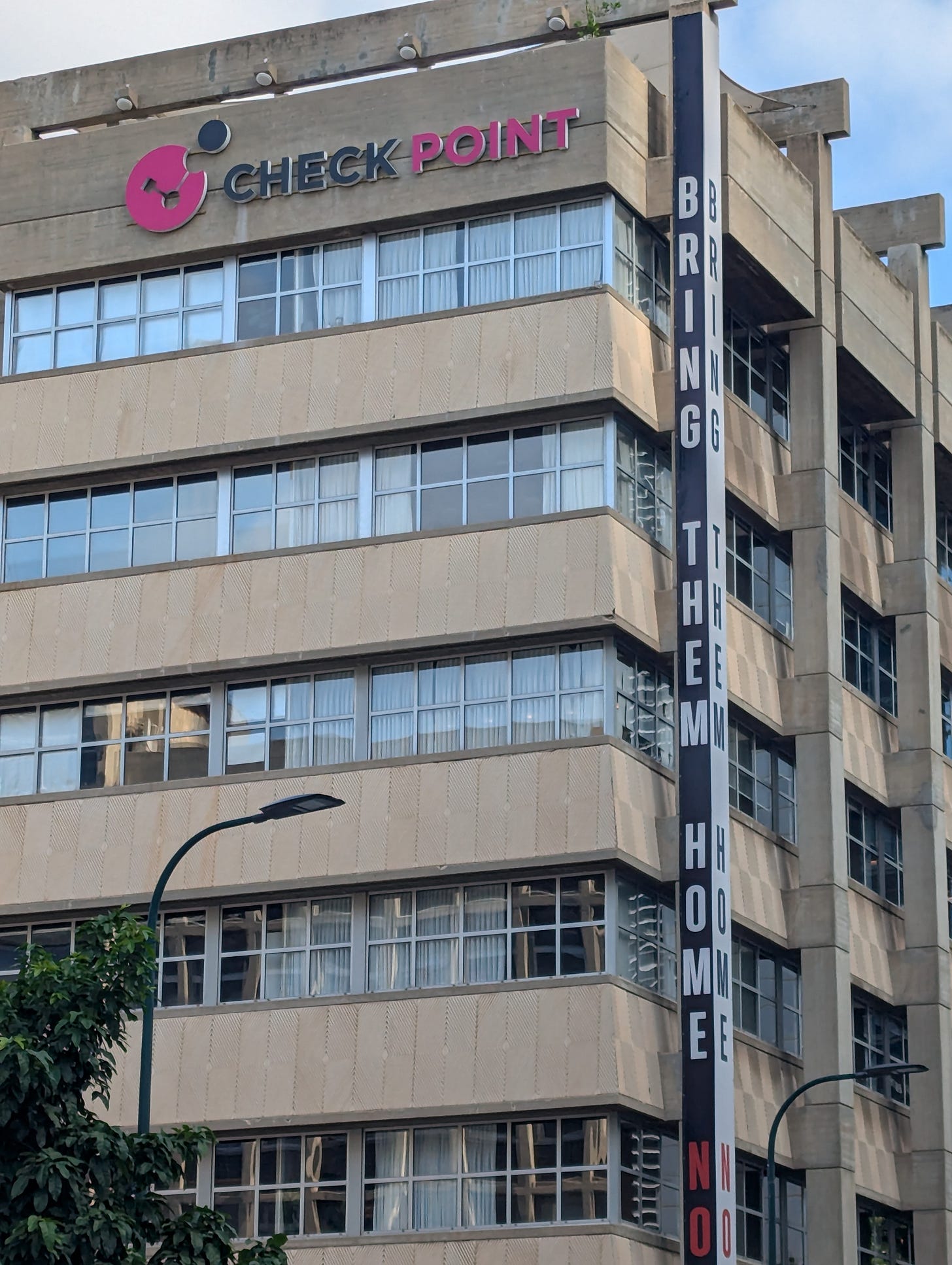
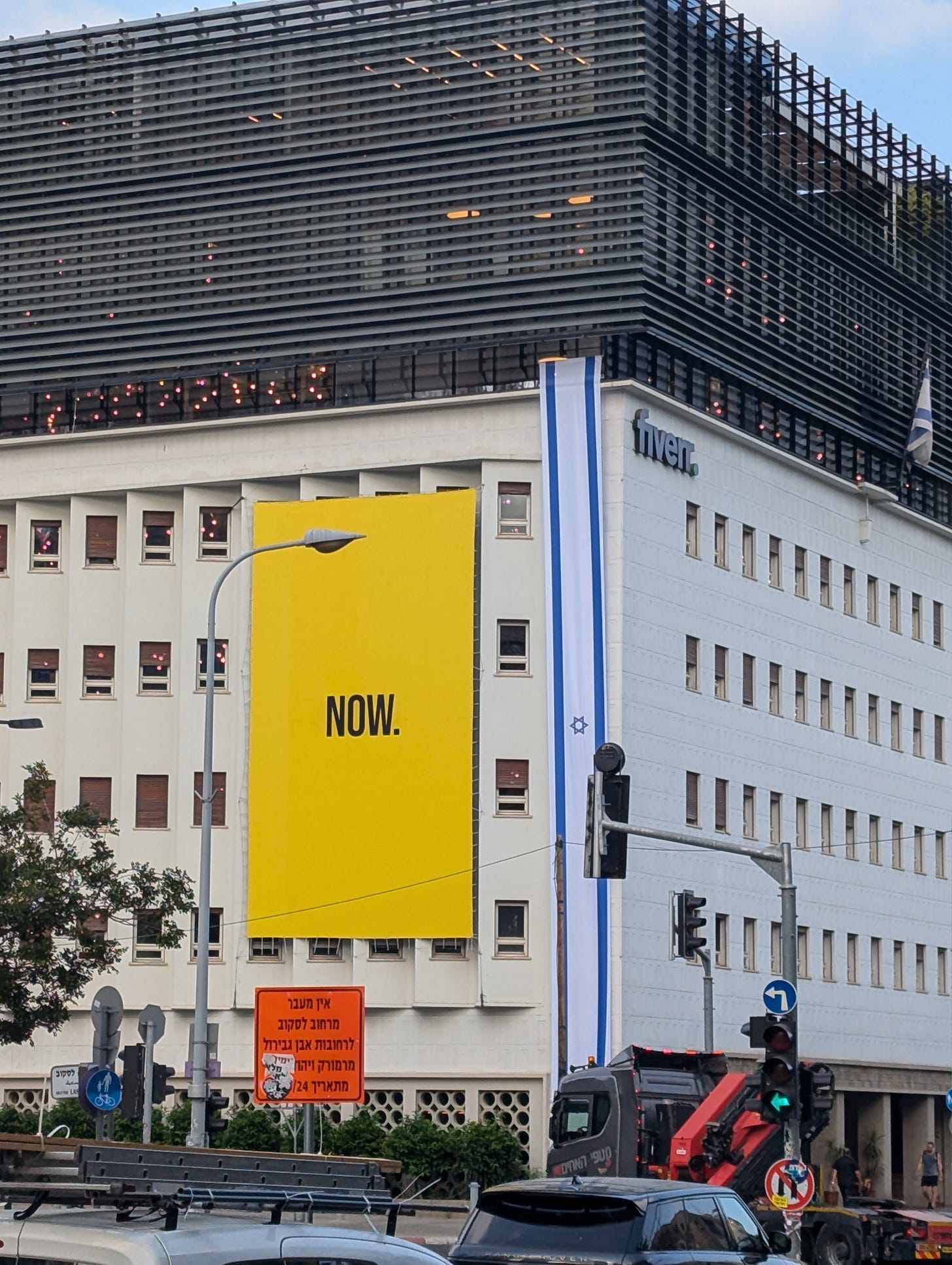
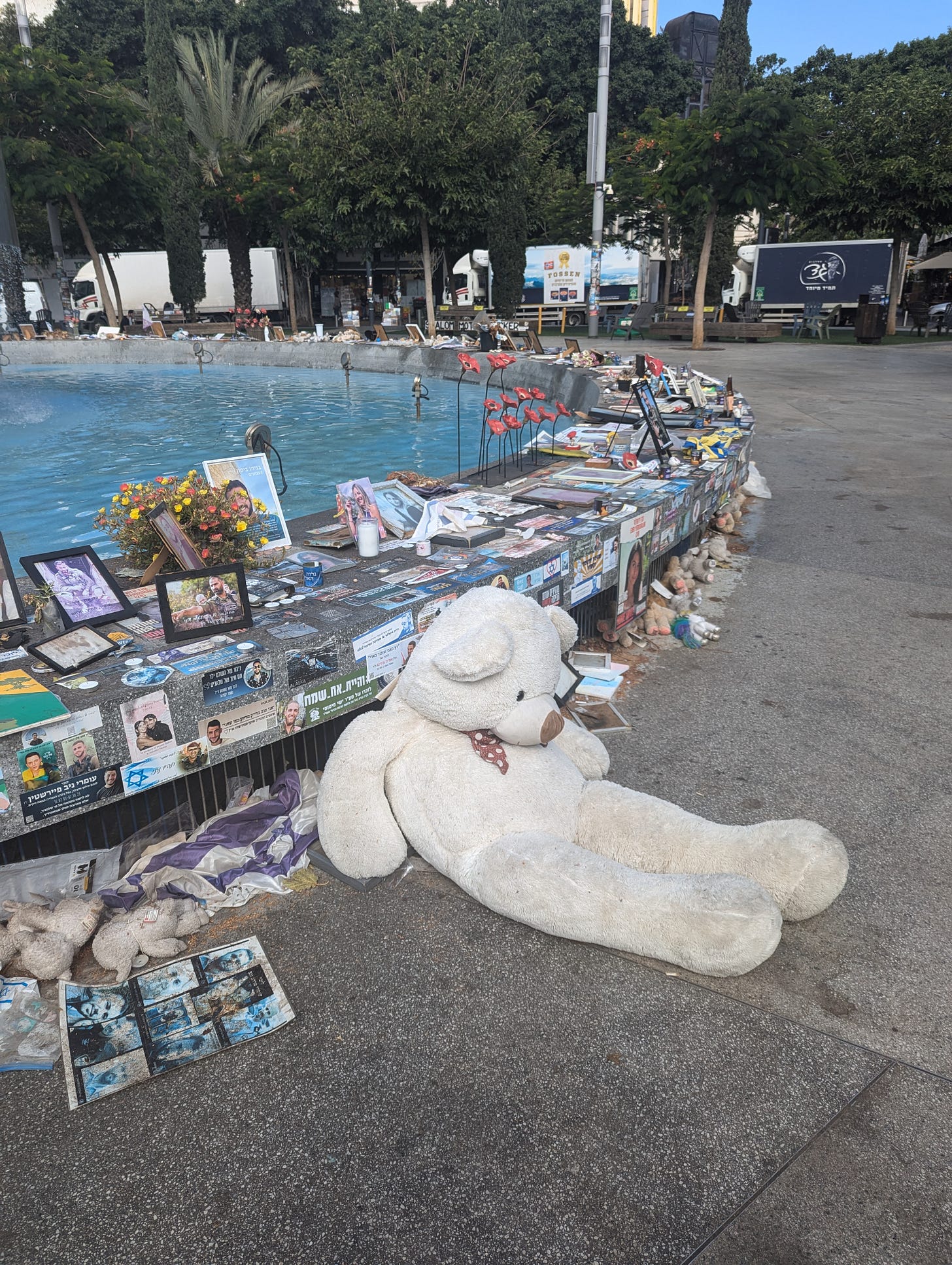
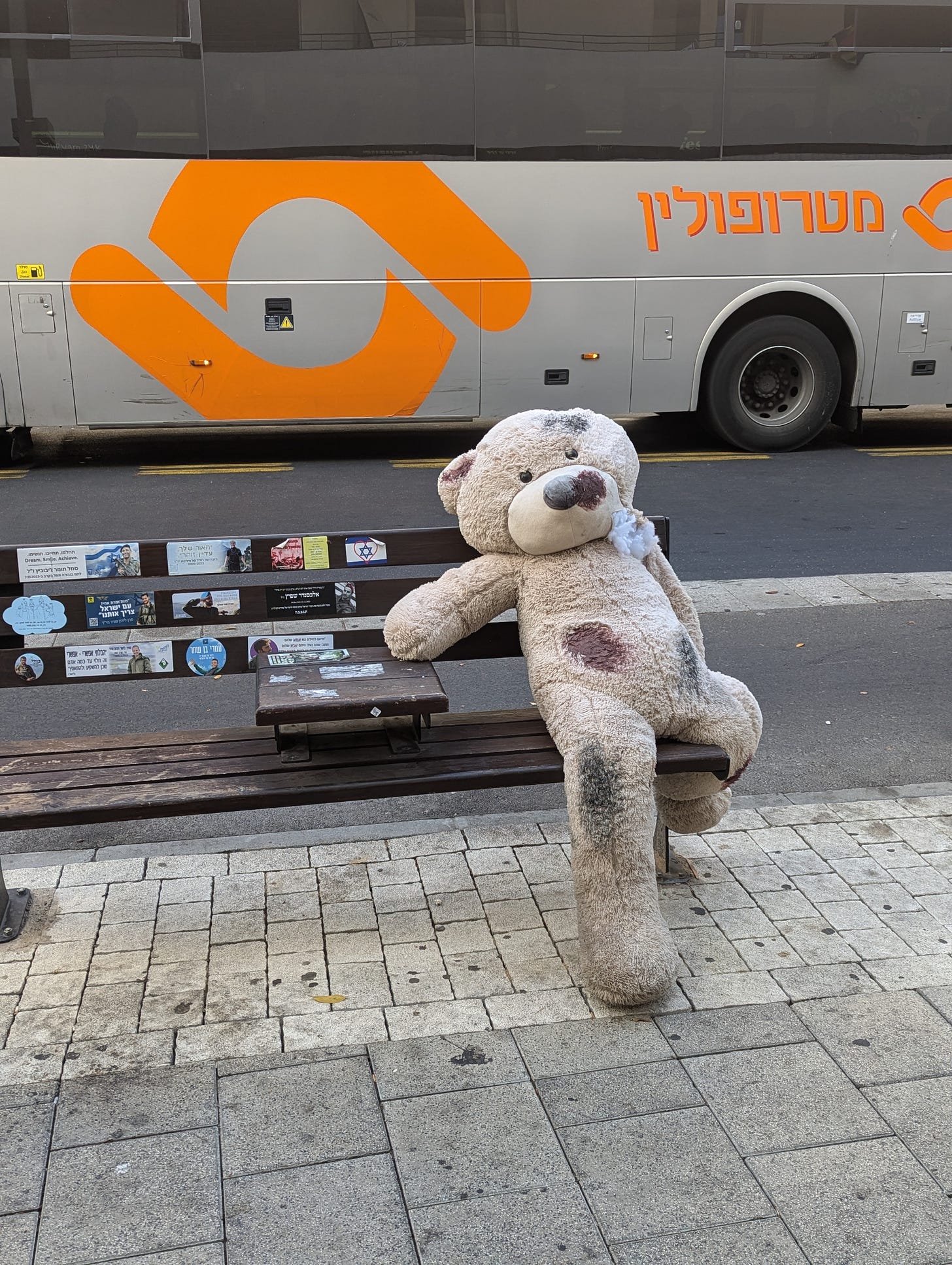
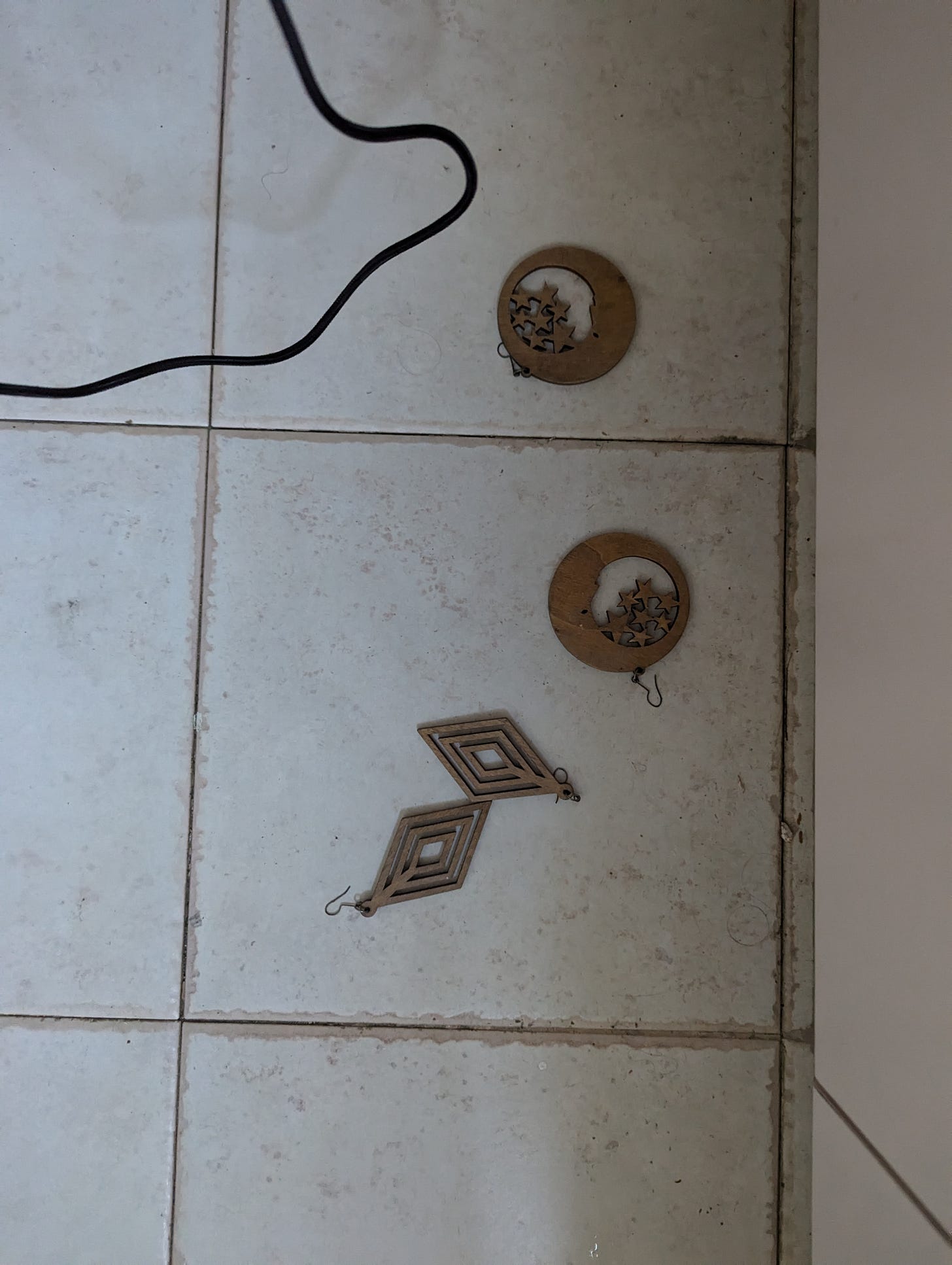
Aviya, I was introduced to your site by fellow J-Binder Erika Dreyfus' Practicing Writers' Newsletter. I am moved, moist eyes, my heart hurting for what I knew somewhat, but what you document so intimately. Blessings on our people and may those taken and those left behind come home soon.
Thank you Aviya, for moving our hearts. The picture is changing (I am hopeful) here in the United States since you wrote this. Thank you for slowing things down for us, showing others like me what is happening within Israel.